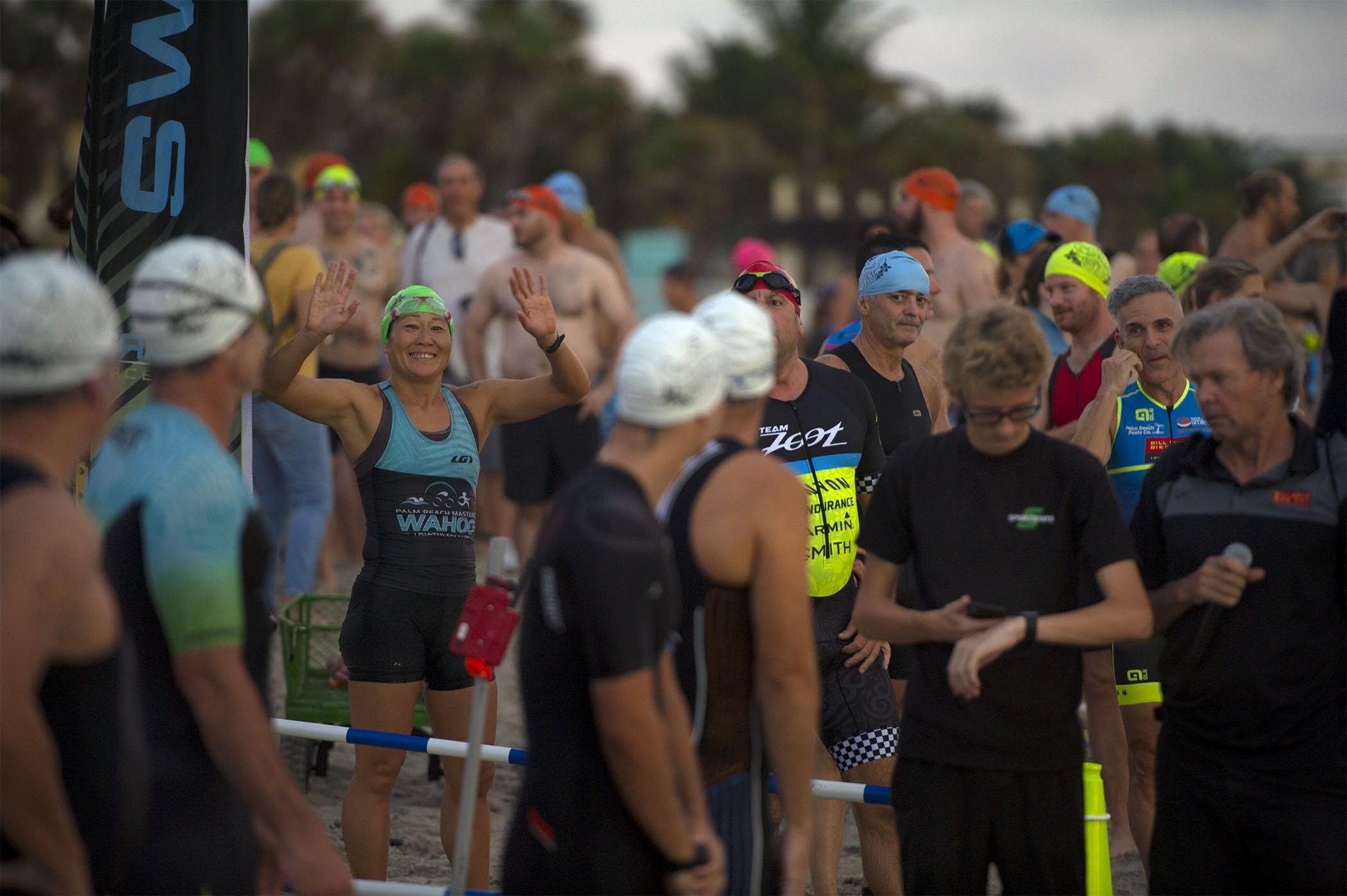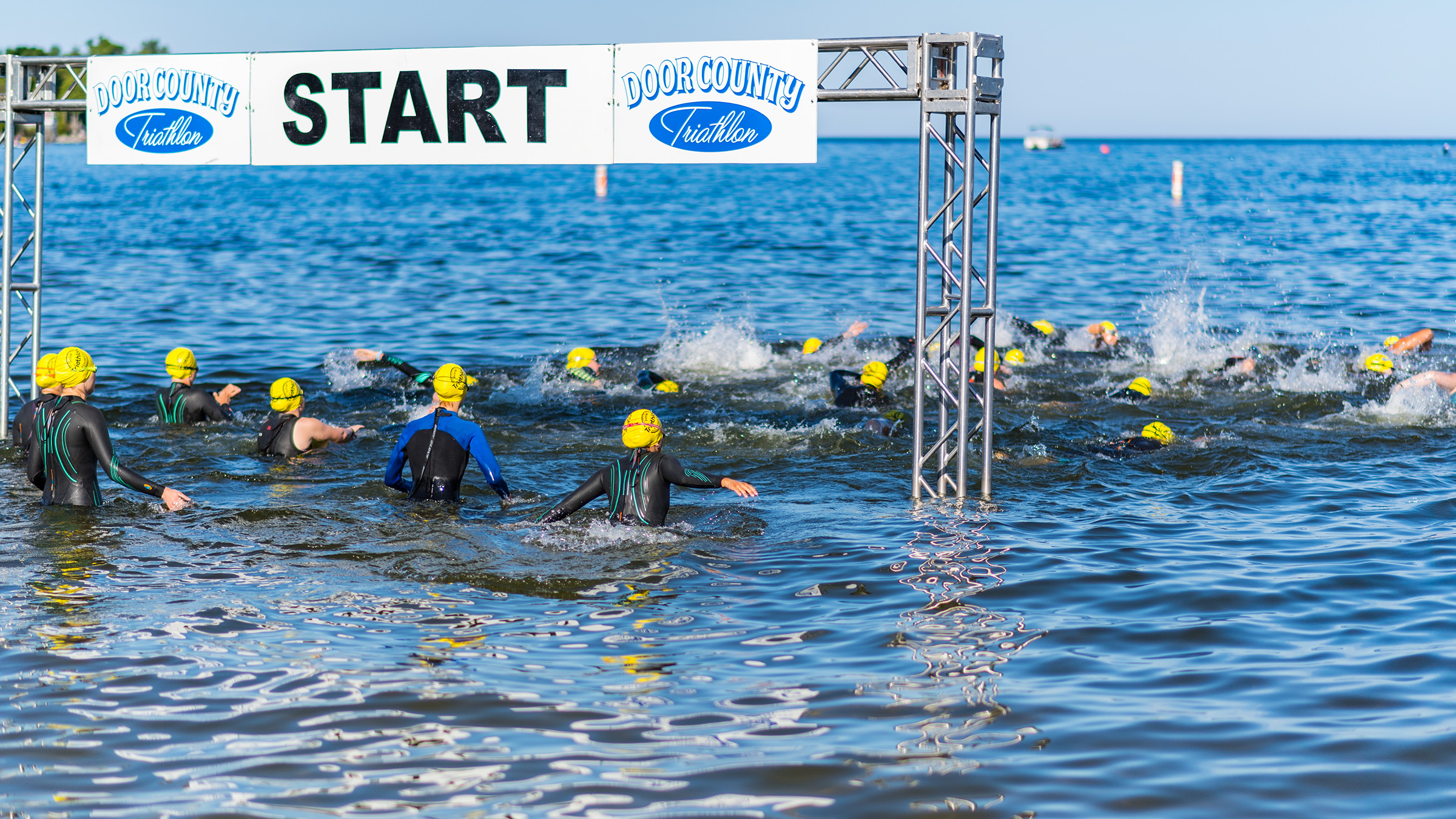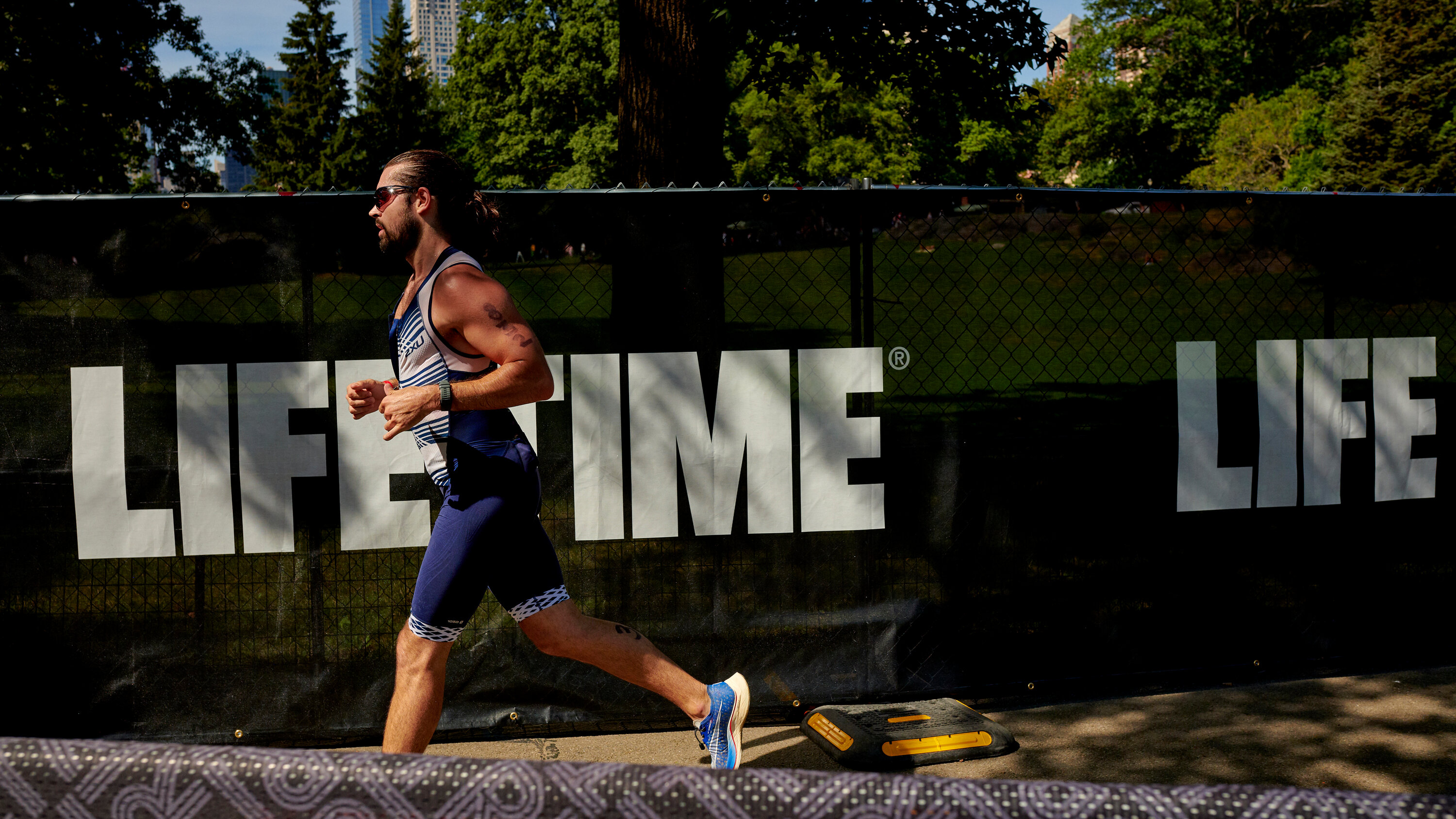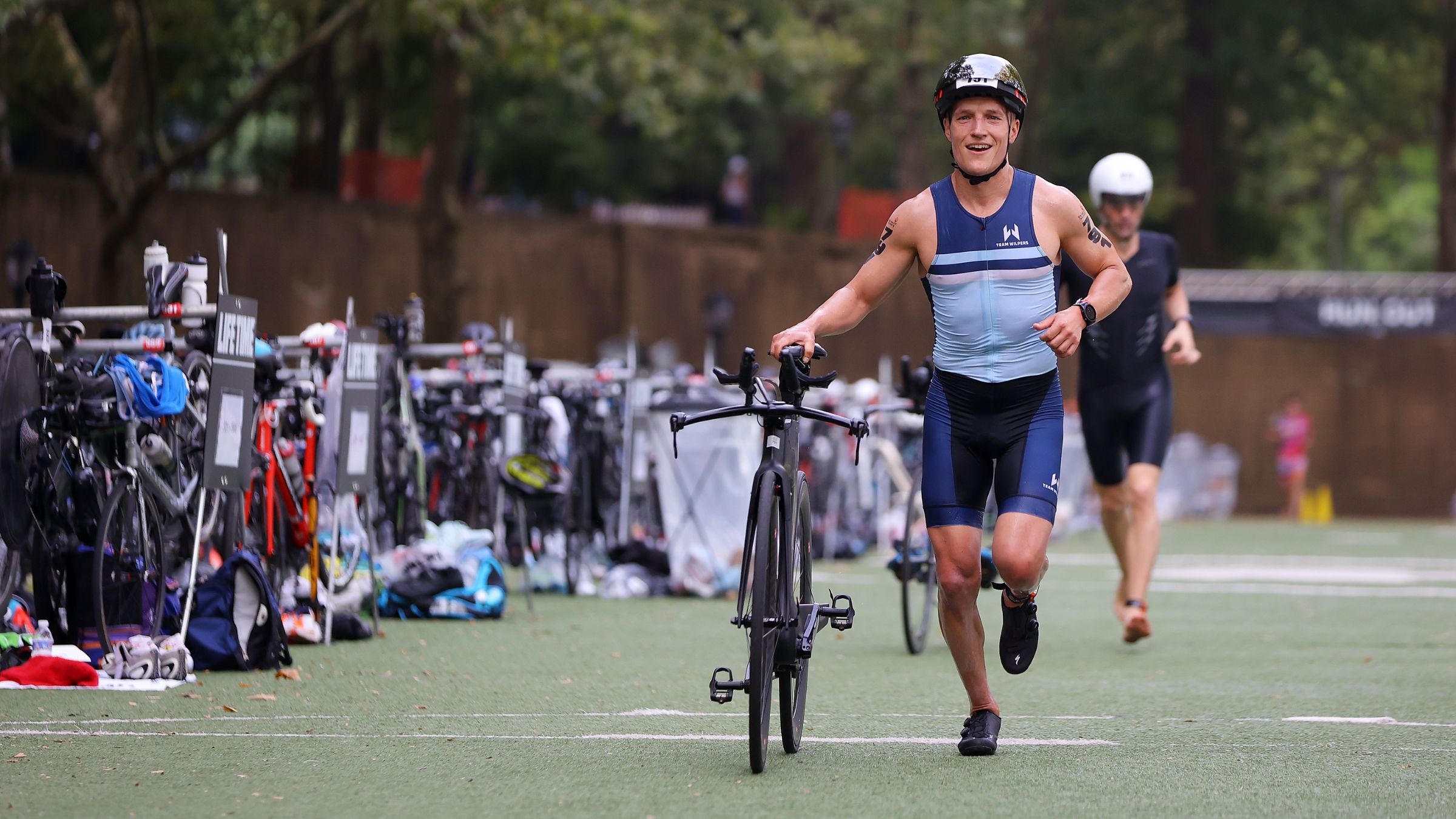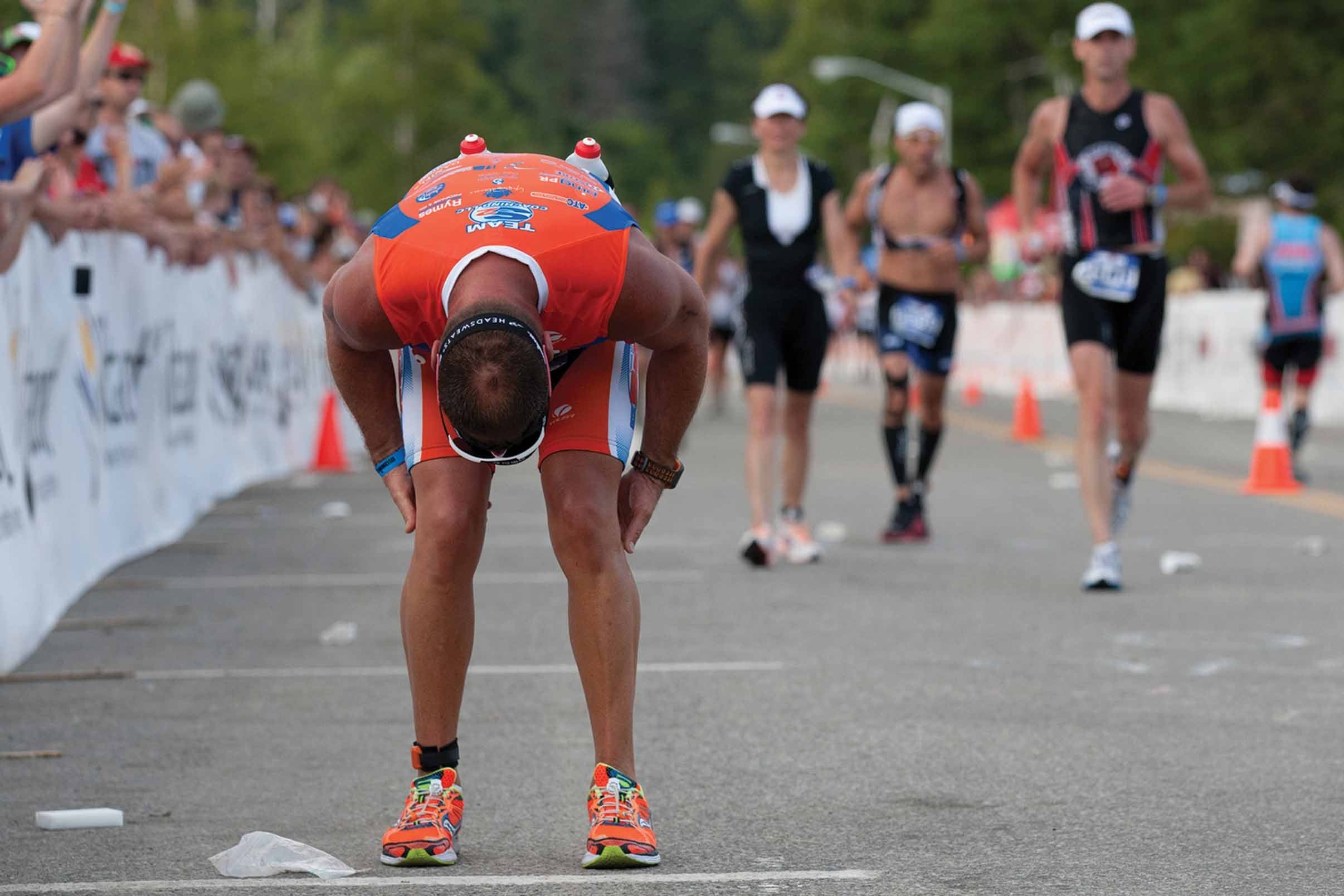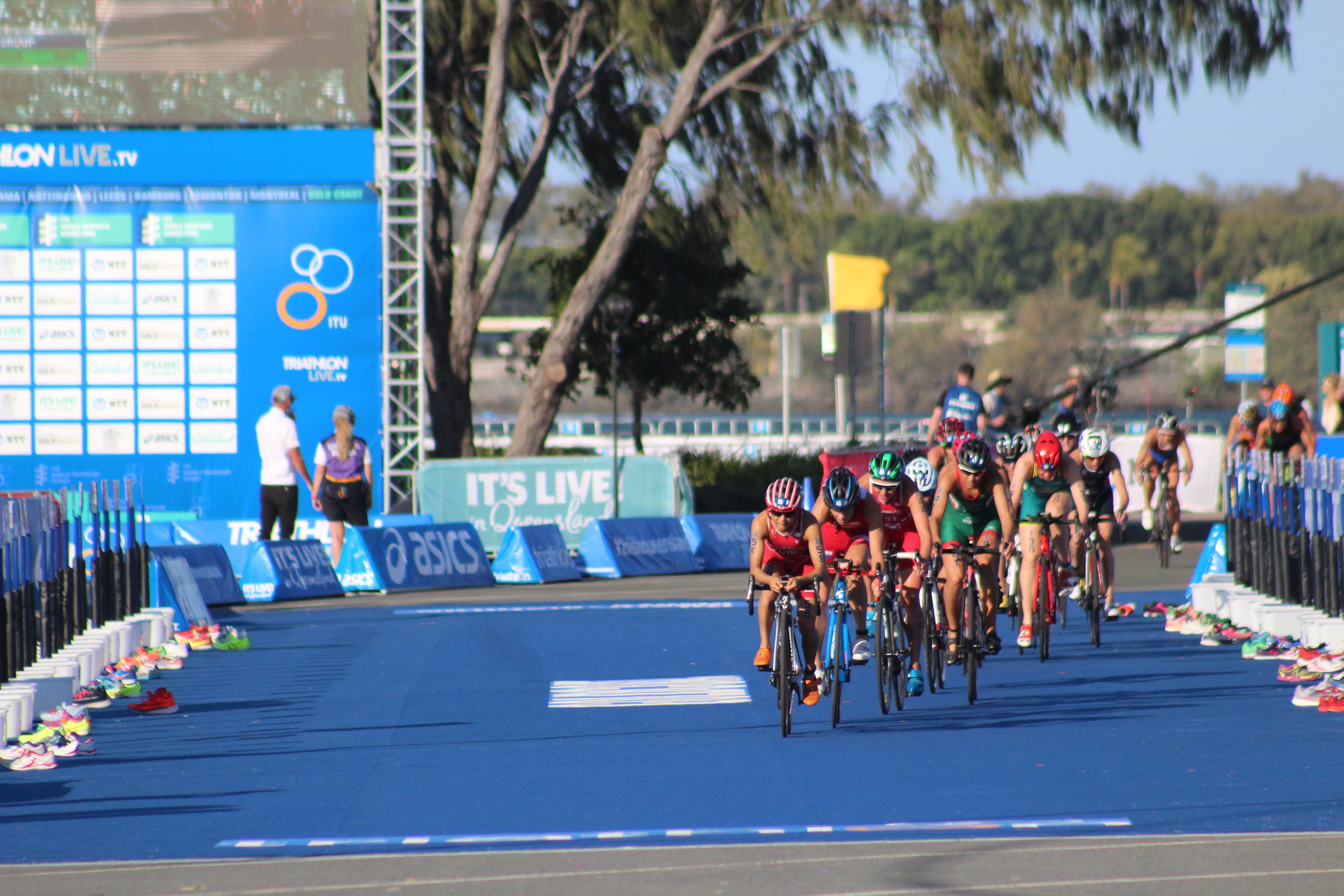Home>Misc>Featured>How Do I Train For A Triathlon And Do Strength Training
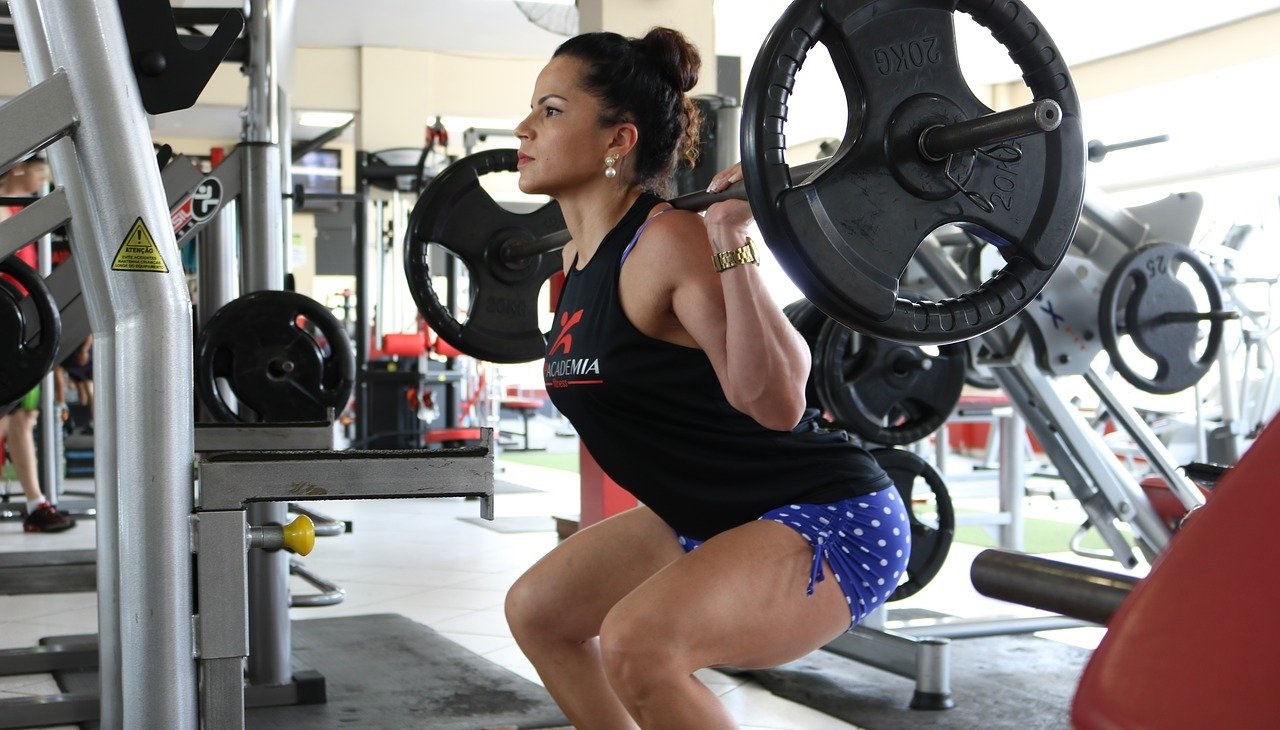

Featured
How Do I Train For A Triathlon And Do Strength Training
Modified: August 21, 2023
Learn how to train for a triathlon and incorporate strength training into your routine. Get featured tips and advice from experts in the field.
Introduction
Welcome to the world of triathlon training and strength training! If you’re looking to take your fitness to the next level and challenge yourself in multiple disciplines, then combining these two types of training is a great way to achieve your goals. Triathlon, a multisport endurance event consisting of swimming, cycling, and running, requires a well-rounded approach to fitness. And what better way to improve your overall athletic performance than by incorporating strength training into your routine?
The idea of training for a triathlon can be overwhelming, especially if you’re new to the sport. It may seem like an impossible feat to swim, cycle, and run long distances, all while maintaining the strength and stamina needed to excel. However, with the right training plan and dedication, it is absolutely possible to not only complete a triathlon but also see significant improvements in your strength and fitness levels.
The key to a successful triathlon journey lies in finding a harmonious balance between cardiovascular endurance, muscular strength, and mental resilience. While triathlon training will primarily focus on building your cardiovascular fitness and endurance, incorporating strength training into your routine will help develop the necessary muscular strength to excel in the different disciplines of the sport.
In this article, we will delve into the importance of combining triathlon training and strength training, explore the demands of a triathlon, guide you in designing a balanced training plan, discuss incorporating cardiovascular and strength training exercises, provide tips on nutrition and recovery, and offer advice for staying motivated throughout your training journey.
Whether you’re a beginner looking to complete your first triathlon or a seasoned athlete aiming to improve your performance, this article will provide you with valuable insights and practical strategies to help you train effectively and maximize your potential.
Importance of Combining Triathlon Training and Strength Training
Combining triathlon training and strength training is a winning combination that can greatly enhance your overall performance and help you achieve your fitness goals. While triathlon training focuses on improving cardiovascular endurance and skill development in swimming, cycling, and running, strength training complements this by building muscular strength, power, and stability.
One of the key benefits of incorporating strength training into your triathlon training plan is injury prevention. Triathlon is a physically demanding sport that puts a significant amount of stress on the body. By strengthening the muscles, tendons, and ligaments through strength training exercises, you can reduce the risk of overuse injuries and maintain better overall structural balance. This is especially important as you increase your training volume and intensity.
Strength training also plays a crucial role in improving your race performance. While cardiovascular fitness is essential for endurance events like triathlon, having a strong and resilient body can give you a competitive edge. Strength training exercises, such as squats, lunges, and deadlifts, target specific muscle groups involved in swimming, cycling, and running, helping you generate more power and efficiency in each discipline. Additionally, by developing your core strength, you’ll be able to maintain proper form and posture throughout the race, reducing the risk of fatigue and injury.
Beyond performance benefits, strength training can also enhance your overall body composition. By increasing lean muscle mass, you’ll not only improve your athletic performance but also boost your metabolism, making it easier to maintain a healthy weight. Moreover, strength training helps build strong bones, which is particularly important for endurance athletes who can be susceptible to bone density loss due to repetitive impact from running.
Another advantage of combining triathlon and strength training is the mental resilience it develops. Triathlons are not only physically demanding but also mentally challenging. The ability to push through discomfort and fatigue is crucial to success. Strength training provides a unique opportunity to build mental fortitude and discipline, as you have to overcome the physical and mental barriers associated with lifting heavy weights or completing demanding exercises.
Ultimately, the combination of triathlon training and strength training creates a well-rounded and balanced fitness routine. It allows you to reap the benefits of both cardiovascular endurance and muscular strength, leading to improved performance, injury prevention, enhanced body composition, and mental resilience.
Understanding the Demands of a Triathlon
Before diving into your training plan, it is crucial to understand and appreciate the unique demands of a triathlon. Triathlons are multi-discipline endurance events that require participants to complete three different disciplines consecutively: swimming, cycling, and running. Each discipline poses its own challenges, and being prepared for these demands is essential for a successful race.
The swimming portion of a triathlon requires participants to have a good level of water proficiency and endurance. Open-water swimming, which is common in triathlons, introduces additional challenges such as dealing with currents, waves, and limited visibility. Being comfortable and efficient in the water, as well as developing good stroke technique and bilateral breathing, are key factors to consider in your training.
Once out of the water, participants transition to the cycling leg of the triathlon. Cycling demands a combination of cardiovascular fitness, leg strength, and endurance. It is important to develop efficient pedaling techniques, maintain a steady cadence, and be comfortable riding in different terrains and conditions. Additionally, understanding the intricacies of pacing, gear selection, and nutrition during the cycling leg will contribute to a smooth and successful race.
Following the cycling leg, participants transition to the final discipline: running. Running in a triathlon requires mental and physical resilience, as fatigue can set in after completing the swimming and cycling portions. It is vital to train your body to smoothly transition from biking to running, known as the brick workout, as this will help adapt your muscles and cardiovascular system to the unique demands of running after cycling. Endurance, speed, and proper running form are key areas to focus on during your training.
In addition to the physical demands of each discipline, it is important to consider the logistical aspects of a triathlon. Transition areas, where participants change from one discipline to the next, require efficient organization and planning. Practicing these transitions during your training will contribute to a smoother race day experience. It is also essential to familiarize yourself with the race course, rules, and any specific equipment requirements or restrictions.
Understanding the demands of a triathlon goes beyond the individual disciplines; it also includes the mental and emotional challenges that can arise during the race. Triathlons test your perseverance, focus, and ability to push through discomfort. Building mental resilience through training and visualization exercises is crucial to keep a positive mindset and overcome any obstacles you may face during the race.
By gaining a deep understanding of the demands of a triathlon, you can tailor your training plan to effectively prepare yourself for the unique challenges that lie ahead. This knowledge will not only help you physically but also mentally and emotionally as you work towards achieving your triathlon goals.
Designing a Balanced Training Plan
A well-designed training plan is essential for maximizing your performance and minimizing the risk of injuries in a triathlon. It should take into account the specific demands of the sport, your current fitness level, and your individual goals. Here are some key considerations to keep in mind when designing a balanced training plan for your triathlon:
Set Clear Goals: Begin by setting clear and specific goals for your triathlon. Whether it’s completing your first race or aiming for a personal best, knowing your objectives will help you structure your training plan accordingly.
Consider Your Fitness Level: Assess your current fitness level in each discipline of the triathlon – swimming, cycling, and running. This will help you identify areas of weakness and determine where you need to focus your training efforts.
Allocate Training Time: Determine the amount of time you can dedicate to training each week. Consider your work and personal commitments, and be realistic about what you can sustain. It’s important to strike a balance between training and allowing for adequate rest and recovery time.
Include Variety: A balanced training plan should include a mix of cardiovascular, strength, and flexibility exercises. In addition to swim, bike, and run sessions, incorporate cross-training activities such as yoga, Pilates, or resistance training to develop overall fitness and prevent overuse injuries.
Periodization: Divide your training plan into specific phases, known as periodization, to gradually build up your fitness level and peak for your race. Typically, these phases include a base phase, a strength-building phase, a speed and endurance phase, and a taper phase leading up to the race.
Frequency and Intensity: Determine the frequency and intensity of your training sessions. Aim for a mix of high-intensity sessions to improve speed and endurance, as well as lower-intensity recovery sessions to allow your body to adapt and recover.
Gradual Progression: Progress your training gradually to avoid overtraining and injury. Increase the volume or intensity of your workouts by no more than 10% per week to allow your body to adapt and minimize the risk of burnout or overuse injuries.
Rest and Recovery: Don’t underestimate the importance of rest and recovery in your training plan. Scheduling rest days and incorporating active recovery activities, such as light yoga or swimming, will help your body repair and rebuild, enhancing your overall performance.
Listen to Your Body: Pay attention to any signs of fatigue, pain, or overtraining. Adjust your training plan accordingly and don’t be afraid to take rest days or seek professional guidance to prevent injuries and maintain a healthy training balance.
A well-rounded and balanced training plan will not only prepare you physically for the challenges of a triathlon but also reduce the risk of burnout and improve your overall enjoyment of the training process. It’s important to remember that everyone’s training needs and abilities are unique, so listen to your body, be flexible, and be open to modifying your plan as needed.
Incorporating Cardiovascular Exercises into Your Routine
Cardiovascular exercises are a vital component of triathlon training as they improve your aerobic capacity, endurance, and overall cardiovascular fitness. Here are some effective ways to incorporate cardiovascular exercises into your training routine:
Swimming: Swimming is a primary discipline in triathlon, so it’s important to include swim workouts in your training plan. Focus on building swim endurance by gradually increasing the distance you swim during each session. Incorporate interval training to improve speed and technique. Additionally, consider open water swims to simulate race conditions and practice sighting and navigating through water.
Cycling: Cycling is another critical component of triathlon training. Incorporate longer rides to build endurance and mimic the distances you’ll be covering in the race. Include interval training to improve speed and power. Vary your terrain and incorporate hill climbs to develop strength and prepare for different cycling conditions. Long-distance rides will also help you build mental toughness and get accustomed to spending extended periods on the bike.
Running: Running is the final discipline in a triathlon. Incorporating regular running sessions will improve your cardiovascular endurance and running technique. Start with shorter distance runs and gradually increase the duration and intensity. Include varied workouts such as tempo runs, interval training, and long runs to develop speed, endurance, and mental resilience. Consider incorporating brick workouts, where you transition from cycling to running, to adapt to the unique demands of running after biking.
Interval Training: Intervals are a great way to boost cardiovascular fitness and improve speed and endurance. For example, during a swim workout, alternate between periods of high-intensity sprints and recovery. Use a similar approach for biking and running, alternating between periods of intense effort and active recovery. Interval training helps improve your ability to sustain higher intensities for longer durations and enhances your overall race performance.
High-Intensity Interval Training (HIIT): HIIT workouts involve short bursts of intense exercise followed by brief recovery periods. They can be incorporated into any cardiovascular activity, such as cycling, running, or swimming. HIIT workouts are time-efficient and help improve your anaerobic fitness, increase your calorie burn, and boost your metabolism. Include a couple of HIIT sessions each week to complement your longer, steady-state workouts.
Cross-Training: In addition to swim, bike, and run sessions, consider incorporating cross-training activities to vary your cardiovascular workouts and reduce the risk of overuse injuries. Activities such as rowing, elliptical training, or stair climbing can provide a different stimulus to your body while still improving your cardiovascular fitness.
Consistency: Consistency is key when it comes to cardiovascular training. Aim for a balance between endurance, speed, and recovery throughout your training week. Gradually increase the duration and intensity of your workouts, but listen to your body and avoid overtraining. Strive for regularity in your training schedule to build and maintain your cardiovascular fitness over time.
Remember, the key to incorporating cardiovascular exercises into your triathlon training routine is to have a mix of workouts that vary in intensity, duration, and terrain. By including a combination of endurance-building sessions, interval training, and cross-training activities, you will improve your cardiovascular fitness, enhance your race performance, and be well-prepared to conquer the triathlon challenge.
Incorporating Strength Training Exercises into Your Routine
While cardiovascular training is crucial for triathlon, incorporating strength training exercises into your routine is equally important. Strength training helps build muscular strength, power, and stability, enhancing your performance and reducing the risk of injuries. Here are some effective ways to incorporate strength training into your triathlon training plan:
Full-Body Compound Exercises: Full-body compound exercises engage multiple muscle groups and mimic the movements used in swimming, cycling, and running. Squats, deadlifts, lunges, and push-ups are excellent examples. These exercises help improve overall strength and stability, enhance power and efficiency in each discipline, and promote functional movement patterns.
Core Strength Training: The core plays a crucial role in triathlon as it stabilizes the body and improves overall performance. Incorporate exercises such as planks, Russian twists, and bridges to strengthen your core. A strong core will also help maintain proper body alignment and reduce the risk of fatigue and injury during the race.
Specificity Training: Tailor your strength training exercises to target the muscles used in each discipline of triathlon. For example, exercises such as lat pull-downs and bent-over rows strengthen the back and shoulders, which are crucial for efficient swimming. Cycling-specific exercises may include single-leg squats or step-ups to improve leg strength and balance. Running-specific exercises can involve lunges or calf raises to strengthen the lower body.
Plyometrics: Plyometric exercises, also referred to as explosive training, involve quick and powerful movements that improve muscular power and speed. Incorporating exercises like box jumps, medicine ball throws, or jump squats into your routine can improve your explosiveness and help with acceleration during swim starts, climbing hills on the bike, or sprinting to the finish line.
Balance and Stability Training: Triathlon requires good balance and stability, especially during transitions and changes in terrain. Incorporating exercises that focus on balance, such as single-leg squats or stability ball exercises, can improve your proprioception and stability, preparing you for unexpected movements or uneven surfaces.
Flexibility and Mobility: Don’t neglect flexibility and mobility exercises, as they can improve your range of motion and help prevent injuries. Include stretching, foam rolling, and yoga sessions in your training plan to enhance flexibility and maintain fluid movement during the race.
Periodization: Just like your cardiovascular training, periodize your strength training to gradually increase intensity and volume over time. This allows for progressive overload and prevents plateaus or overtraining. Focus on endurance-based strength training during the base phase and gradually shift towards more power and speed-based exercises during the later phases of your training.
Recovery and Rest: It’s essential to allow adequate rest and recovery between strength training sessions. Muscles repair and grow stronger during periods of rest, so schedule recovery days or lighter training days to avoid muscle fatigue and maximize the benefits of your strength training program.
Remember, consistency and proper form are key when incorporating strength training exercises into your triathlon training routine. Start with lighter weights and focus on mastering the correct technique before gradually increasing the resistance. Seek guidance from a certified strength and conditioning specialist if needed to ensure you are performing the exercises safely and effectively.
Proper Nutrition and Hydration for Optimal Performance
Proper nutrition and hydration play a crucial role in maximizing your performance and recovery during triathlon training. Fueling your body with the right nutrients and maintaining proper hydration levels can improve your endurance, enhance muscle recovery, and support overall health. Here are some key considerations to keep in mind for optimal nutrition and hydration:
Calorie Balance: Triathlon training is physically demanding and requires a significant amount of energy. Ensure you are consuming enough calories to meet the energy demands of your training sessions. Calculate your daily calorie needs based on your activity level, and adjust your intake accordingly to ensure you maintain a healthy balance.
Macronutrient Balance: Aim for a well-balanced diet that includes an adequate amount of carbohydrates, proteins, and healthy fats. Carbohydrates are the primary fuel source for endurance activities, so focus on consuming complex carbohydrates such as whole grains, fruits, and vegetables. Proteins help repair and rebuild muscle tissue, while healthy fats provide essential nutrients and support hormone production.
Pre-training and Pre-race Nutrition: Before your training sessions or race, consume a balanced meal or snack that includes carbohydrates for energy and a moderate amount of protein to support muscle function. Aim to eat 1-2 hours before your workout to allow for proper digestion and minimize any discomfort during exercise.
During Training and Racing: For longer training sessions or races lasting over 60 minutes, it is important to consume carbohydrates to maintain glycogen stores and prevent fatigue. Utilize sports drinks, energy gels, or easily digestible snacks to fuel your body during exercise. Experiment with different fueling strategies during training to find what works best for you and your stomach.
Hydration: Proper hydration is essential for maintaining performance and preventing dehydration. Drink water regularly throughout the day and during workouts to replenish fluid losses. Monitor your urine color to ensure it is pale yellow, indicating proper hydration. Consider adding electrolytes to your water or utilizing sports drinks during longer workouts to replace lost electrolytes and maintain fluids balance.
Post-training and Recovery Nutrition: After your training sessions, prioritize recovery by consuming a combination of carbohydrates and protein within 30-60 minutes to replenish glycogen stores and support muscle repair. Include sources of lean protein and carbohydrates in your post-workout meal or snack, such as a protein shake with a banana or a small turkey sandwich on whole grain bread.
Nutrient Timing: Distribute your meals and snacks throughout the day to maintain a steady supply of energy and nutrients. Aim for 3-4 balanced meals and incorporate healthy snacks in between to sustain your energy levels and support muscle recovery.
Individualized Approaches: Every athlete is unique, and nutrition and hydration needs may vary. Experiment with different foods, supplements, and hydration strategies during your training to discover what works best for your body. Consult with a registered dietitian or sports nutritionist if you need personalized guidance.
Achieving proper nutrition and hydration is an ongoing process that requires attention and adjustments. Listen to your body, monitor your performance, and make modifications to your nutrition and hydration strategies as needed. By fueling and hydrating your body optimally, you can enhance your training, improve your race performance, and support your overall health and well-being.
Rest and Recovery: Essential for Triathlon and Strength Training
In the world of triathlon and strength training, rest and recovery are often overlooked but crucial components for optimal performance and growth. Adequate rest and recovery allow your body to repair, rebuild, and adapt to the physical stresses placed upon it during training. Here are some reasons why rest and recovery are essential for triathlon and strength training:
Muscle Repair and Growth: During training, the muscles experience microscopic damage and breakdown. It’s during rest and recovery that the body repairs and rebuilds these muscles, making them stronger and more resilient. Without sufficient rest, the muscles may not have enough time to repair, leading to decreased performance and increased risk of injury.
Prevention of Overtraining: Overtraining occurs when the body doesn’t have enough time to recover adequately between training sessions, leading to a decline in performance and increased risk of injury. Rest and recovery periods allow for the restoration of energy stores, reduction of fatigue, and the prevention of overuse injuries. Recognizing the signs of overtraining, such as persistent fatigue, decreased performance, mood changes, and weakened immune system, is crucial. Take rest days and incorporate active recovery activities, such as gentle swimming or yoga, to prevent overtraining.
Adaptation and Performance Improvement: Rest and recovery periods give the body time to adapt to the training stimuli and become stronger. The muscles, cardiovascular system, and nervous system can recover and respond to the training stress, resulting in better performance and progress over time. Without adequate rest, the body may struggle to adapt, leading to stagnation in performance and potential burnout.
Injury Prevention: Rest periods are essential for injury prevention. High-intensity training and repetitive movements involved in triathlon and strength training can put a strain on the muscles, tendons, and joints. Rest allows these tissues to recover, reducing the risk of overuse injuries such as tendinitis or stress fractures. Giving your body sufficient time to heal and regenerate is essential for long-term success and injury-free training.
Mental and Psychological Refreshment: Rest days not only benefit your body but also your mind. Endurance training, such as triathlon, can be mentally demanding and exhausting. Taking regular rest days allows you to recharge mentally, reducing the risk of burnout and maintaining a positive mindset towards your training. Use rest days to engage in other activities you enjoy, spend time with loved ones, or simply relax and rejuvenate.
Sleep Quality: Quality sleep is a vital component of rest and recovery. During sleep, the body undergoes important physiological processes, including muscle repair, hormone regulation, and memory consolidation. Aim for 7-9 hours of quality sleep each night to optimize these processes and support overall recovery.
Individualized Approach: Rest and recovery needs vary between individuals. Factors such as training intensity, duration, fitness level, age, and overall health influence the required amount of rest. Listen to your body and adjust your training schedule accordingly. If you feel excessively fatigued, experience persistent soreness, or notice a decline in performance, it may be a sign that you need more rest.
Remember, rest and recovery should be treated as an integral part of your training plan, not as an afterthought. Incorporate regular rest days, prioritize quality sleep, practice stress management techniques, and listen to your body’s needs. By giving your body the time it needs to rest and recover, you’ll optimize performance, minimize the risk of injuries, and ensure long-term success in your triathlon and strength training journey.
Monitoring Progress and Adjusting Your Training Plan
Monitoring your progress and making adjustments to your training plan is essential for continuous improvement and optimal performance in triathlon and strength training. Here are some key strategies to help you effectively monitor your progress and make necessary adjustments:
Keep a Training Log: Maintaining a training log allows you to track your workouts, including distance, duration, intensity, and any other relevant details. This log serves as a valuable reference point to monitor your progress over time and identify patterns or areas for improvement. Additionally, logging your workouts allows you to reflect on past performances, evaluate your training plan, and make adjustments as needed.
Use Technology and Apps: Utilize technology and fitness apps to track and analyze your training data. GPS watches or fitness trackers can provide valuable insights into your pace, distance, heart rate, and calories burned during workouts. Fitness apps can help you monitor and visualize your progress, set goals, and provide feedback on your training performance.
Assess Performance Metrics: Regularly evaluate your performance metrics to assess progress. This can include measuring your swim, bike, and run times, tracking your strength gains in the gym, or monitoring improvements in endurance or power. By comparing current results with previous benchmarks, you can identify areas where you’re excelling and areas that may require additional focus.
Listen to Your Body: Pay close attention to how your body responds to training. Notice any signs of fatigue, sluggishness, or persistent soreness. If you consistently feel fatigued or notice a decline in performance, it may be a sign that you need more rest or need to adjust your training intensity or volume. Trust your instincts and make adjustments accordingly to avoid overtraining and maintain progress.
Seek Professional Guidance: Consider consulting with a coach, trainer, or sports specialist who can provide expert guidance and help monitor your progress. They can analyze your training data, assess your technique, provide feedback, and make appropriate adjustments to your training plan based on your individual needs and goals.
Periodic Fitness Assessments: Incorporate periodic fitness assessments to measure your progress and identify areas for improvement. These assessments can include testing your swimming efficiency, cycling power output, running speed, or body composition. Periodically reassessing your fitness levels can help you set new goals and determine the effectiveness of your training program.
Be Flexible and Adaptable: Your training plan should be flexible and adaptable to changes in your goals, schedule, and response to training. Life events, injuries, or unforeseen circumstances may require adjustments to your training plan. Embrace these changes as opportunities to reassess and modify your training program to ensure continued progress.
Rest and Recovery: Monitoring your progress also includes monitoring your rest and recovery. Assess whether you’re adequately allowing for rest days, recovery activities, and quality sleep. If you consistently feel fatigued or notice a decline in performance, it may be an indication that you need to prioritize recovery and adjust your training plan accordingly.
Remember, monitoring progress and adjusting your training plan is not only about chasing constant improvement but also ensuring that your training remains effective, safe, and enjoyable. By regularly evaluating your progress, listening to your body, seeking guidance when needed, and staying flexible, you’ll be able to fine-tune your training plan and make the necessary adjustments to achieve your goals in triathlon and strength training.
Tips for Staying Motivated and Overcoming Challenges
Staying motivated and overcoming challenges are crucial aspects of triathlon and strength training. Here are some helpful tips to keep you motivated and overcome obstacles along the way:
Set Clear and Realistic Goals: Establish clear and specific goals that inspire and motivate you. Whether it’s completing your first triathlon, achieving a personal best, or increasing your strength, having a goal in mind will give you something to work towards and keep you focused.
Create a Supportive Environment: Surround yourself with like-minded individuals who share your passion for triathlon and strength training. Join a local training group, find a training partner, or connect with others through online communities or social media. Having a support system can provide accountability, motivation, and valuable advice.
Break Your Training into Manageable Steps: Focus on small, achievable goals along the way. This can be completing a distance you’ve never done before, lifting a heavier weight, or shaving off a few seconds from your race time. Celebrate these milestones as they will keep you motivated and give you a sense of accomplishment.
Keep a Positive Mindset: Embrace a positive attitude towards training and view challenges as opportunities for growth. Acknowledge that setbacks and obstacles are part of the process, but with determination and perseverance, you can overcome them.
Implement Variation in Your Training: Incorporate variety in your workouts to keep things interesting and avoid monotony. Add new exercises, explore new training routes, or try different training methods to keep your workouts fresh and exciting.
Reward Yourself: Establish rewards for achieving your training milestones. Treat yourself to a new piece of training gear, a massage, or a day off from training. These rewards can help keep you motivated and give you something to look forward to.
Track Your Progress: Keep track of your progress and celebrate your successes. Document your training achievements, write down personal bests, and reflect on how far you’ve come. Seeing tangible evidence of your progress will boost your confidence and drive to continue pushing forward.
Visualize Your Success: Use visualization techniques to imagine yourself crossing the finish line or accomplishing your training goals. Visualizing success can help build confidence and keep you motivated, especially during challenging training sessions or when faced with doubts.
Practice Self-Care: Prioritize self-care activities such as rest, recovery, quality sleep, and proper nutrition. Taking care of your physical and mental well-being will ensure you have the energy and motivation to train effectively and overcome challenges.
Stay Flexible: Be adaptable and willing to adjust your training plan when necessary. Life happens, and unexpected events may force you to modify your training schedule. Embrace these changes and find creative ways to stay active and engaged.
Remember Your Why: Reflect on the reasons why you started your triathlon and strength training journey. Reconnect with your passion and remind yourself of the personal satisfaction and growth that comes from pushing yourself to new limits. Keeping your “why” at the forefront of your mind will help you stay motivated during challenging times.
Triathlon and strength training require dedication, discipline, and mental fortitude. By implementing these tips and strategies, you’ll be better equipped to stay motivated, overcome challenges, and continue on your journey to achieving your triathlon and strength training goals.
Conclusion
Congratulations on taking the initiative to combine triathlon training and strength training to enhance your overall fitness and performance! By incorporating both cardiovascular exercises and strength training into your routine, you’re giving yourself a well-rounded approach to becoming a stronger, faster, and more resilient athlete.
We discussed the importance of finding a balance between the demands of a triathlon, including swimming, cycling, and running, and the benefits of strength training. Strength training not only helps prevent injuries but also boosts performance by improving muscular strength, power, and stability.
Designing a balanced training plan that includes varied workouts, proper nutrition, and rest and recovery is essential for progress and optimal performance. Monitoring your progress, making adjustments when necessary, and staying motivated in the face of challenges will keep you on track to achieve your triathlon and strength training goals.
Remember to listen to your body, seek professional guidance when needed, and celebrate the small victories along the way. Embrace the journey and the process of becoming a better athlete, and don’t forget to enjoy the exhilaration and sense of accomplishment that come with crossing the finish line or reaching new fitness milestones.
Triathlon and strength training require commitment, discipline, and perseverance. Stay motivated, stay focused, and stay consistent. Embrace the challenges, celebrate your progress, and remember that every step you take is a step closer to achieving your goals.
Now, go out there, dive into the water, pedal hard on the bike, and run with determination. Fuel it all with the strength and resilience that comes from your dedication and training. You are capable of achieving remarkable things. Good luck on your triathlon and strength training journey!


